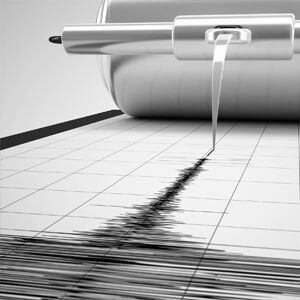News in Quincy, MA
Lie Detection and the Polygraph
For as long as human beings have deceived each other, people have tried to develop techniques for detecting deception and determining truth. These techniques have usually included interviews and interrogations to try to see through deception and reveal what a deceiver will not freely admit. In the 20th century, lie detection took on scientific aspects with the development of techniques that use measures of physiological responses as indicators of deception. The best known of these is the polygraph. This technique, which relies on physiological measurements developed early in the century, has become for many in the U.S. law enforcement and intelligence communities the most valued method for identifying criminals, spies, and saboteurs when direct evidence is lacking.
Polygraph examinations are widely used in the United States and in some other countries (notably, Israel, Japan, and Canada) for three main purposes:
They are used for pre-employment screening in law enforcement and pre-employment or preclearance screening in agencies involved in national security. The great majority of U.S. police departments, for example, include polygraph examinations as part of their pre-employment screening batteries. Preclearance screening may involve current employees who are being considered for new assignments, typically at a higher level of clearance.
They are used for screening current employees, especially in security-sensitive occupations. For example, the U.S. Department of Energy polygraph program, established in 1999, mandated polygraph examinations for about 1,300 employees in sensitive positions; a year later, the program was expanded to cover several thousand additional employees.
They are used in investigations of specific events, for instance, in criminal cases. Although there are many restrictions on the use of polygraph results in courts, they are often used to help direct and focus criminal investigations.
(paraphrased from 'The Polygraph and Lie Detection' by Division of Behavioral and Social Sciences and Education from The National Academies Press)
The Lie Detection Mystique
In order to frame a scientific discussion about the polygraph, we consider the role of this method of detecting deception in American culture and compare it with methods of detecting deception that have been accepted in other cultures. The polygraph, perhaps more than any other apparently humane interrogation technique, arouses strong emotions. There is a mystique surrounding the polygraph that may account for much of its usefulness: that is, a culturally shared belief that the polygraph device is nearly infallible. Practitioners believe that criminals sometimes prefer to admit their crimes and that potential spies sometimes avoid certain job positions rather than face a polygraph examination, which they expect will reveal the truth about them. The mystique shows in other ways, too. People accused of crimes voluntarily submit to polygraph tests and publicize “passing” results because they believe a polygraph test can confer credibility that they cannot get otherwise. In popular culture and media, the polygraph device is often represented as a magic mind-reading machine. These facts reflect the widespread mystique or belief that the polygraph test is a highly valid technique for detecting deception.
(paraphrased from 'The Polygraph and Lie Detection' by Division of Behavioral and Social Sciences and Education from The National Academies Press)
Overall Examination
A polygraph test and its result are a joint product of an interview or interrogation technique and a psycho-physiological measurement or testing technique. It is misleading to characterize the examination as purely a physiological measurement technique. Polygraph examiners' training implicitly recognizes this point in several ways.
It provides instruction on the kind of atmosphere that is to be created in the pretest interview, advises on techniques for convincing examinees of the accuracy of the test, and offers guidance (in different ways for different test formats) for selecting comparison questions. Examiners are advised to control these details—sometimes following carefully specified procedures—because they can affect test results.
Polygraph examination procedures often explicitly combine and interweave testing and interviewing. When a polygraph chart indicates something other than an ordinary non-deceptive response to a relevant question, the examiner typically pursues this response with questioning during the course of the examination.
For example, the examiner may say, “You seem to be having a problem in the area of X [the relevant item]” and ask the examinee if he or she can think of a reason for having a strong physiological reaction to that question. The interview may reveal a misunderstanding of the question, which is then explained and re-asked in a subsequent charting. Alternatively, if the reaction remains unexplained to the examiner's satisfaction, the issue may be probed in more detail in the interview or with questions in a subsequent charting. Some examiners believe that an important use of polygraph testing is in helping narrow the range of issues that need to be investigated, using both polygraph and other investigative tools.
The important role of interview conditions is also recognized in much of the practice and lore of polygraph testing. For example, it is widely and plausibly believed that polygraph results are different for “friendly” and “unfriendly” examinations (e.g., examiners proffered by the defense or by the prosecution in criminal cases). Presumably, examinees are more relaxed with “friendly” examiners and less likely to have responses that indicate deception on the test. When interviewers are hostile or aggressive, examinees may be less relaxed and may produce different physiological responses than those they would produce in response to calm, friendly questioning.
(paraphrased from'The Polygraph and Lie Detection' by Division of Behavioral and Social Sciences and Education from The National Academies Press)




